Why the Wall Behind Your Wood Stove Matters
The wall behind your wood stove isn’t just a backdrop—it’s a design opportunity to add personality, texture, and warmth to your living space. Whether you live in a mountain cabin, a cozy cottage, or a modern rustic farmhouse, that space can anchor the entire room. In 2025, the trends are moving away from plain tiles and predictable stones. Instead, homeowners are embracing character-rich, tactile materials and mood-enhancing palettes that balance function and aesthetic.
This article will walk you through 13 realistic and doable wall behind wood stove ideas—from repurposed materials to trendy textures—each designed to suit the warmth and rustic charm of your stove without compromising safety or style.
1. Reclaimed Brick Veneer with Charcoal Grout
Why It Works: Brick veneer is lighter and easier to install than full-thickness bricks, yet it delivers that sought-after rustic-industrial vibe. Pair it with dark grout for a cozy, fireplace-pub atmosphere.
Design Tip: Use a herringbone pattern above the stove to add visual interest. Accent with warm lighting for a moody glow.
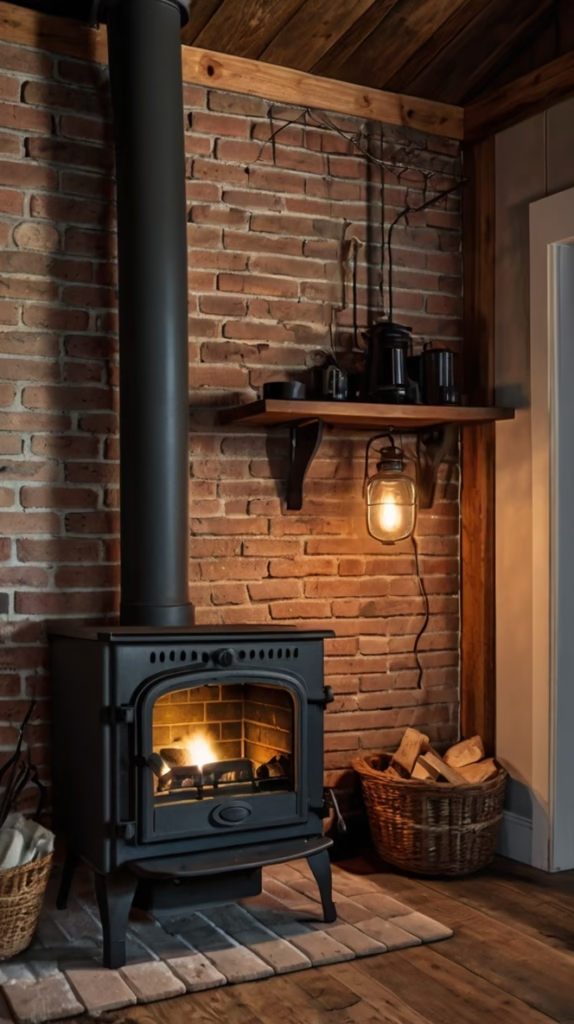
2. Antiqued Copper Panels with Patina Finish
Why It Works: Copper adds warmth and elegance while also being heat-resistant. A patina finish introduces organic texture and color variation—from seafoam green to deep bronze.
Design Tip: Frame the copper panels with dark wood trim for contrast and cohesion with other natural elements in the room.

3. Charred Wood (Shou Sugi Ban-Inspired) Wall
Why It Works: This Japanese wood-burning technique (Shou Sugi Ban) not only creates a striking blackened look but also increases the wood’s fire resistance. Modern interpretations use sealed and treated wood panels that are safe and bold.
Design Tip: Keep surrounding walls light for contrast and hang a minimalist metal decor piece above the stove to break up the texture.
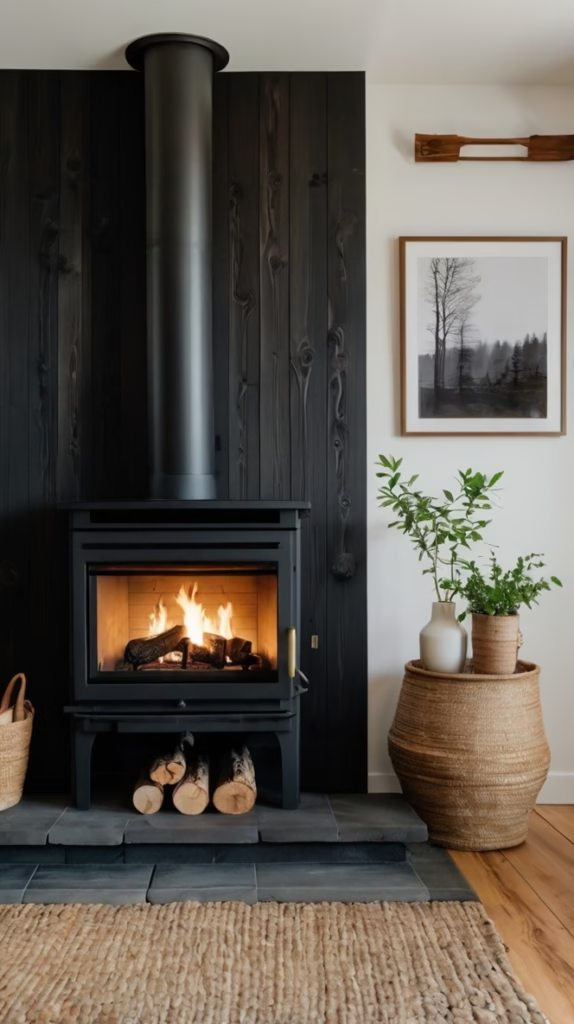
4. Stacked Natural Slate with Matte Finish
Why It Works: Natural slate offers a rugged, layered look and excellent heat resistance. The matte finish gives a soft, earthy appeal without looking too glossy or dated.
Design Tip: Choose earthy gray or olive tones to blend with a neutral color palette and wood accents.
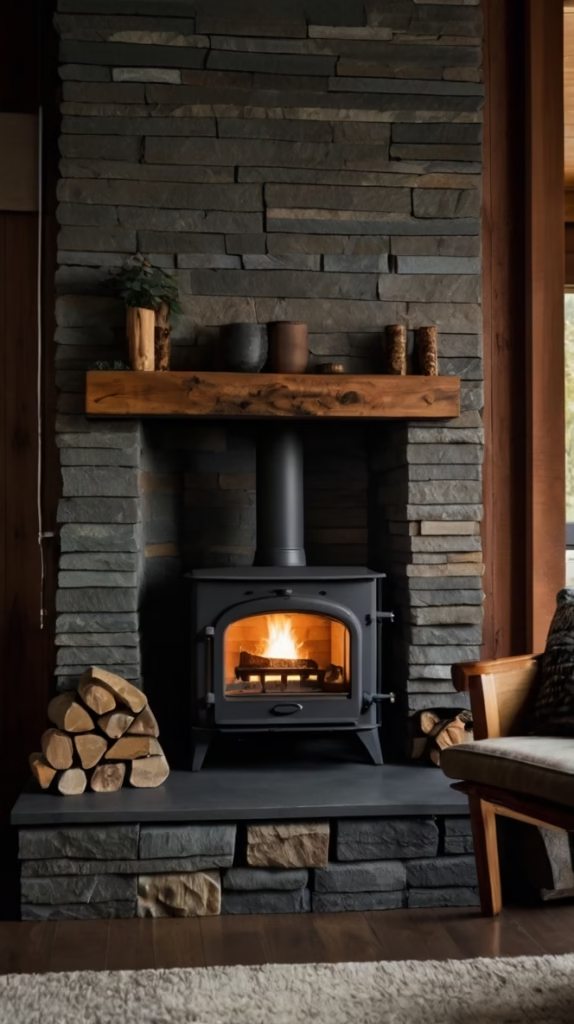
5. Exposed Lath and Plaster with a Raw Edge
Why It Works: Strip away layers to reveal raw plaster and lath boards for an authentic farmhouse feel. This distressed look is perfect for boho, country, or rustic-modern interiors.
Design Tip: Seal the wall with a matte fire-resistant coating to protect and preserve the raw texture.
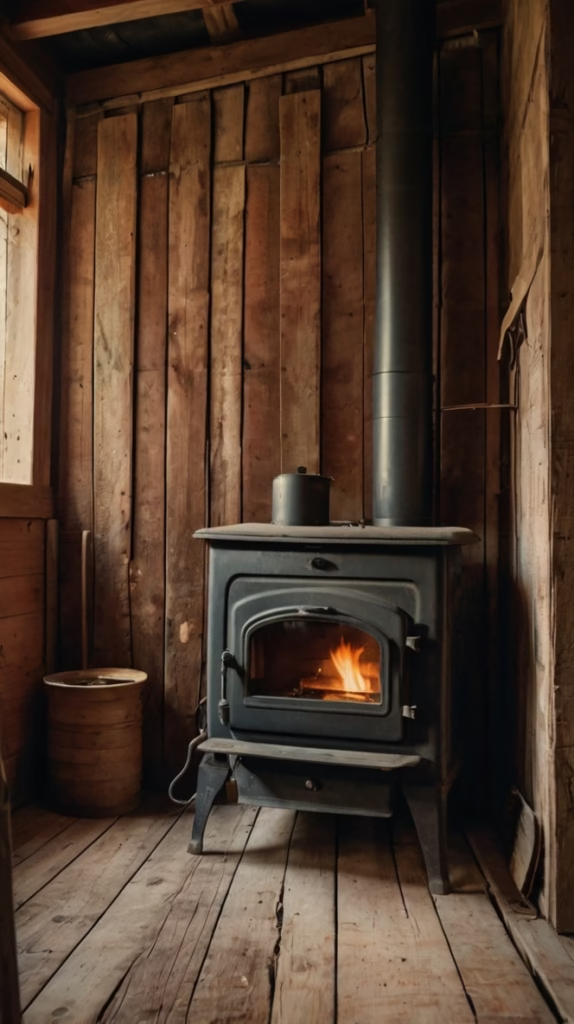
6. Salvaged Barn Wood Planks with Heat-Resistant Backing
Why It Works: Salvaged barn wood brings in warmth and age-old charm. Use heat-resistant cement board behind the wood and leave at least 36″ of clearance depending on stove type (check code).
Design Tip: Stagger plank lengths and vary colors for a reclaimed mosaic effect.
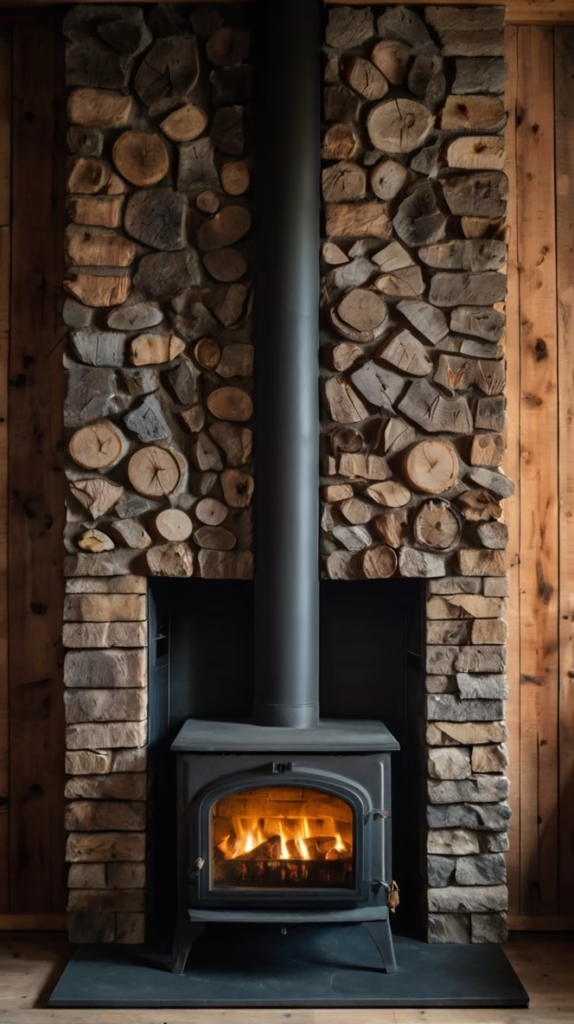
7. Dark Stone Cladding with Floating Wood Mantel
Why It Works: Deep charcoal or black stone cladding turns the stove into a dramatic focal point. Adding a floating reclaimed wood mantel creates balance between modern and rustic.
Design Tip: Style the mantel with seasonal decor—pinecones, candles, or simple vases to add life without crowding.
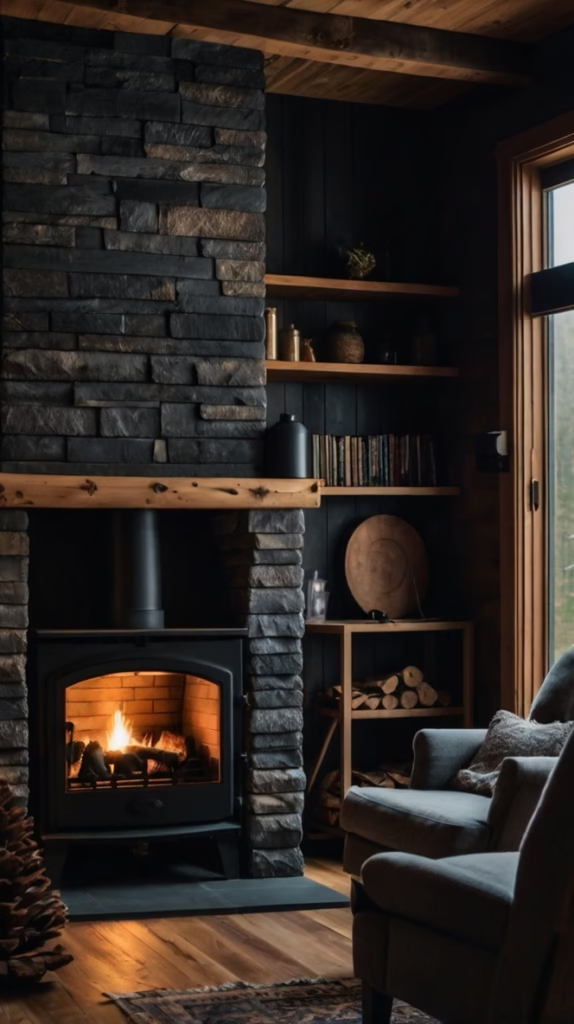
8. Vintage Tin Ceiling Tiles on the Wall
Why It Works: Repurpose tin ceiling tiles with fire-resistant backing. Their embossed patterns add vintage character and are ideal for cottagecore or eclectic decor.
Design Tip: Use whitewashed or matte black tin for a modern twist, and finish edges with reclaimed wood trim.
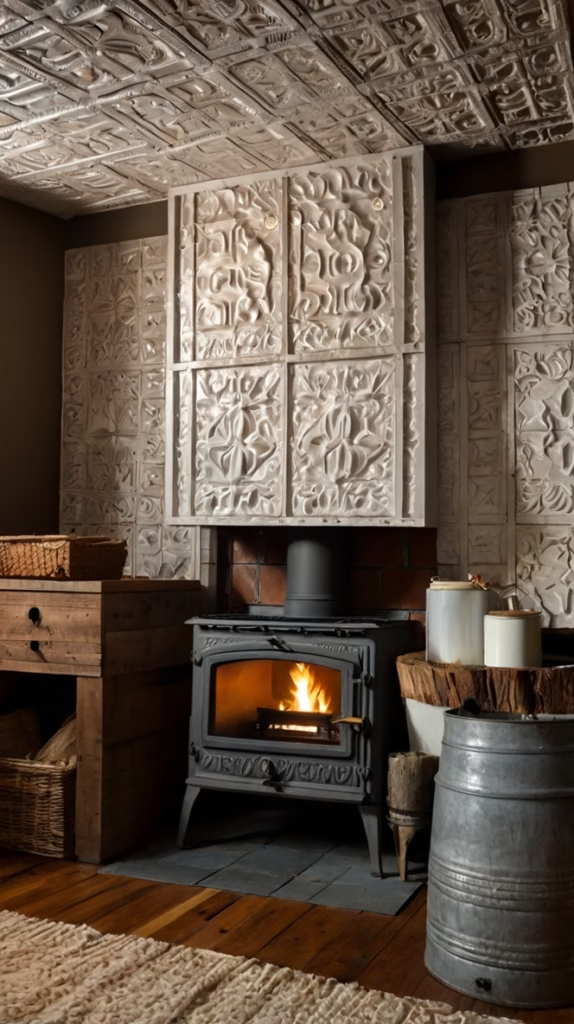
9. Clay Plaster or Limewash Wall in Earth Tones
Why It Works: Clay and limewash offer a natural, breathable finish with soft, romantic texture. Earthy tones like ochre, sage, and sand feel timeless and grounded.
Design Tip: Combine with clay pots or handmade ceramics on adjacent shelving to complete the organic aesthetic.
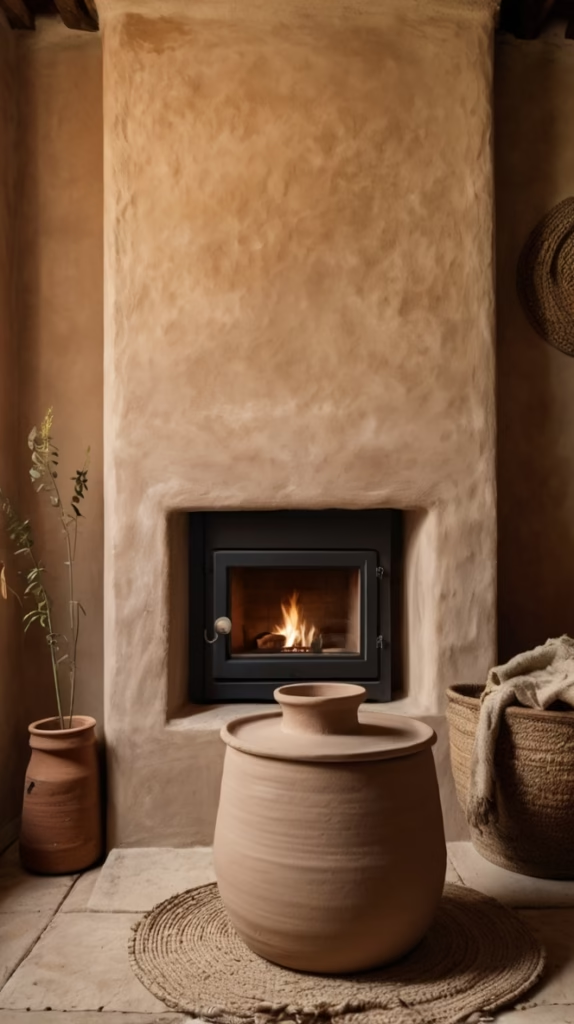
10. Raw Concrete Wall with Soft Wax Finish
Why It Works: Raw concrete is industrial, minimal, and naturally heat-tolerant. A soft wax or sealant prevents dust while preserving the rugged texture.
Design Tip: Contrast the rawness with cozy textiles in the room—like wool rugs or chunky knit throws.
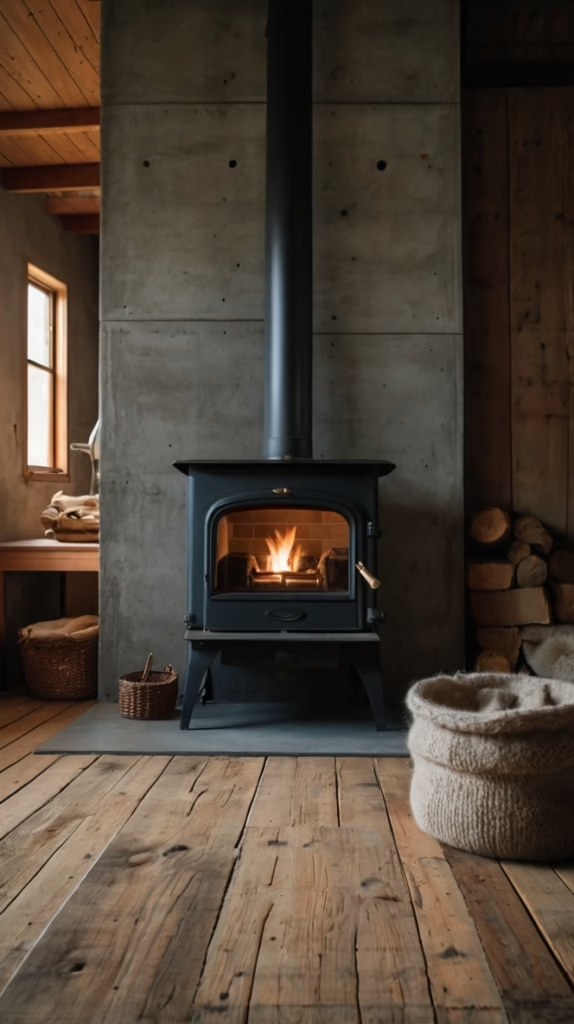
11. Split Log Mosaic Wall
Why It Works: Slice logs into thin rounds and mount them mosaic-style. While purely decorative, this feature can be installed over a fire-rated wall and adds unbeatable woodland charm.
Design Tip: Choose logs of different diameters and tones for depth. Keep it limited to a framed portion behind the stove to avoid visual overload.
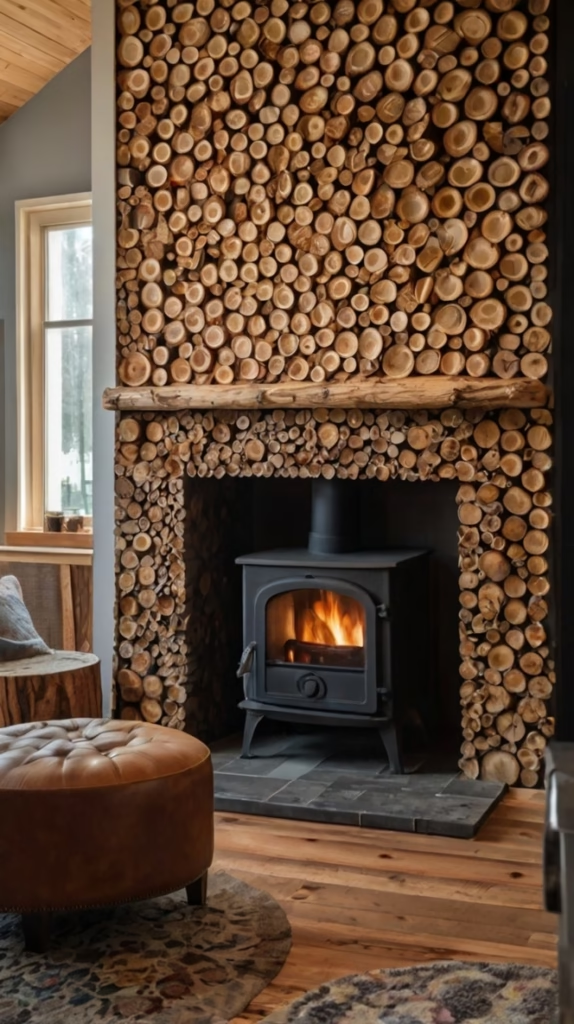
12. Tumbled River Rock Wall with Timber Edging
Why It Works: River rocks give an organic, flowing texture that feels grounded. Unlike stacked stone, they’re more playful and natural.
Design Tip: Use oversized rocks near the base and smaller ones as you go higher for a more balanced layout.
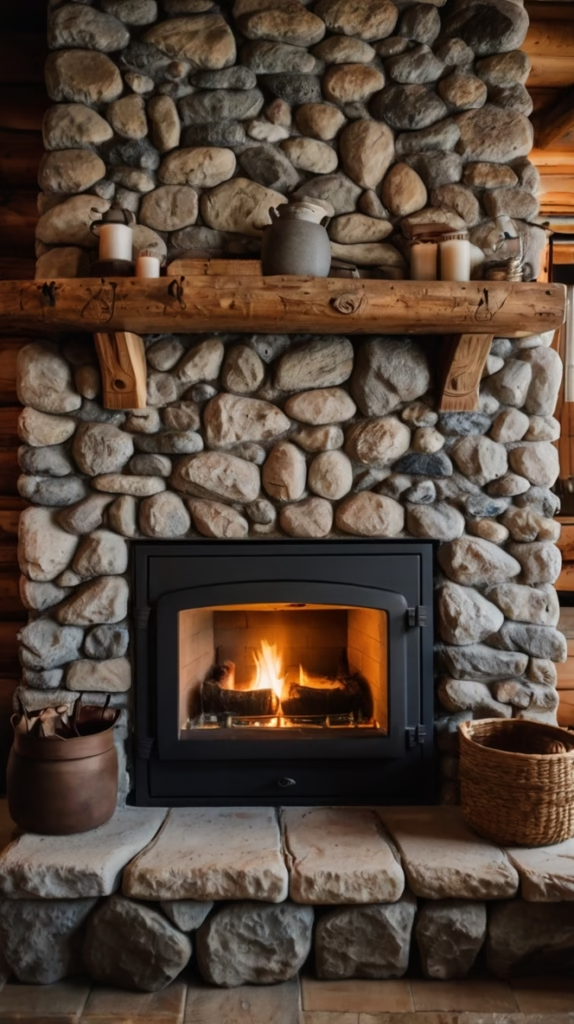
13. Hand-Painted Mural on Fire-Resistant Backboard
Why It Works: This is perfect for artistic homeowners who want a unique, cozy touch. Use heat-resistant fireboard as your canvas and paint a soft landscape, forest scene, or folk-style patterns.
Design Tip: Stick to muted, earthy tones so the mural enhances rather than competes with the stove.
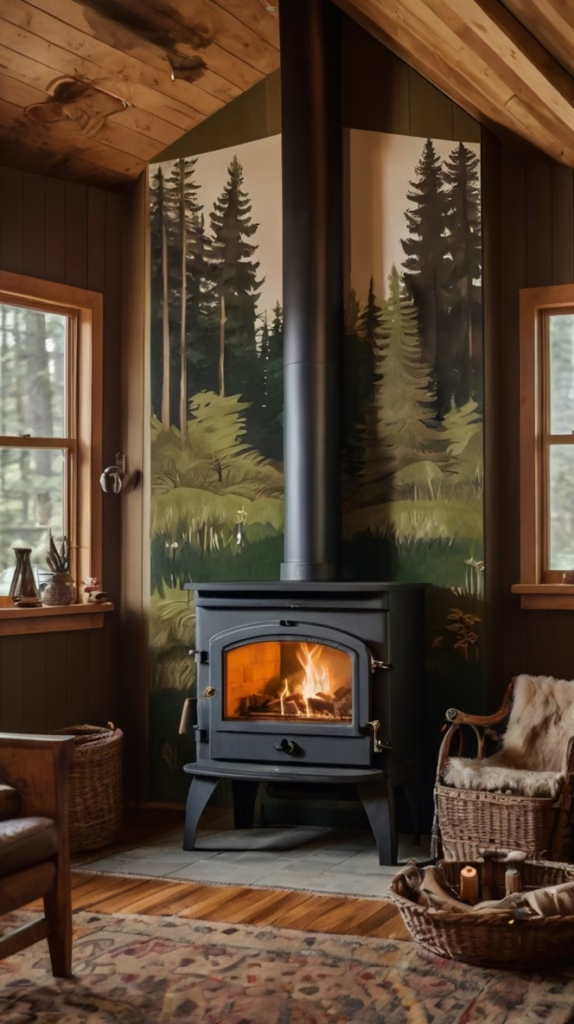
Key Facts: Wall Behind Wood Stove Safety & Style Guide
- Minimum Clearance: Always check local codes—most stoves require at least 36” clearance unless shielded.
- Fire-Resistant Materials: Stone, tile, brick, metal, and treated wood with cement backing are ideal.
- Ventilation: Ensure proper airflow and avoid over-cluttering the area with flammable decor.
- Balance: Combine hard textures (stone, brick) with soft accents (mantels, art) to avoid a cold, uninviting look.
FAQs: Wall Behind Wood Stove Design Tips
Q1: Can I use wood behind a wood stove?
A: Yes, but it must be installed with fire-rated cement board underneath and proper clearance. Always follow manufacturer guidelines and building codes.
Q2: What is the best material for a rustic look?
A: Reclaimed brick, barn wood, and slate are perfect for a rustic aesthetic while offering durability and character.
Q3: Do I need to seal brick or stone behind my stove?
A: It’s recommended to seal porous materials to make cleaning easier and to protect from smoke staining.
Q4: Can I mix materials like stone and wood?
A: Absolutely! Combining textures adds depth—just ensure the flammable material is protected and distanced correctly.
Q5: What’s trending in 2025 for stove wall designs?
A: Earthy, textured materials like clay plaster, patina metal, and artisanal finishes are leading trends in 2025.
Conclusion: Make It the Heart of Your Home
The wall behind your wood stove doesn’t have to be an afterthought. In 2025, it’s your chance to create a cozy, character-filled space that blends warmth, safety, and style. Whether you go bold with charred wood or soft with limewash earth tones, each of these 13 ideas is designed to be doable, inspiring, and grounded in reality.
So get creative—because nothing says “home” like a crackling stove framed by a wall that tells your story.

Haris Virk is the creative force and expert content strategist behind ScrapSafari.com. As an accomplished writer and designer, Haris leads the development of innovative content and visually stunning images that captivate audiences. His extensive experience in crafting engaging articles and unique design ideas makes him a pivotal contributor to ScrapSafari’s success.
Haris’s keen eye for aesthetics and trend forecasting ensures that every piece he produces not only informs but also inspires readers. His proficiency extends to mastering Pinterest strategies, where his thoughtfully crafted pins drive significant traffic and amplify the site’s reach.
With a passion for creativity and a deep understanding of content dynamics, Haris Virk brings a distinctive blend of originality and strategic thinking to the ScrapSafari team, solidifying its place as a go-to source for design, ideas, and inspiration.

